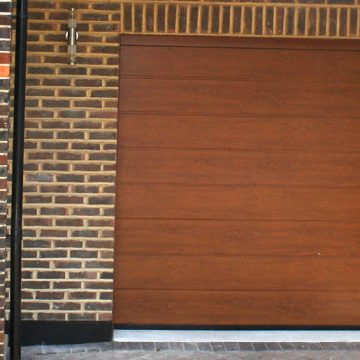You won’t be shocked to hear that garages aren’t very energy efficient. It’s easy to see why – many people don’t view them as extensions of their homes but another place outside used for storage. Yet a few simple changes can reduce your carbon footprint and save you money. Have a read of our guide below for some tips on how to reduce energy usage in your garage.
How to improve the energy efficiency of your garage
1. Insulate Your Garage Walls and Ceiling
Many older garages are not properly insulated. If it’s attached to your home, cold or hot air can circulate through the shared wall – increasing your exposure to car fumes and other contaminants.
Insulating your garage can be as easy as getting material with a suitable U-value and fitting it between the rafters or lining the wall with bubble foil. However, if you require a more thorough way of insulating your entire garage, then we recommend speaking to an expert.
2. Make Your Lights and Heating Eco-Friendly
Still use standard lightbulbs in your garage? Consider switching to LED lights. Not only do they use 25-80% less electricity than standard bulbs but can also last up to 25 times longer. They are a bit more expensive but you can make big savings over time.
In the winter, a portable heater turned up to max is a common sight in many garages – this is both expensive and costly to the environment. One thing you can do is install passive solar heating. That way you can warm and light up your garage when it’s chilly without making a bigger carbon footprint.
Again, solar panels do require some investment but if you’re serious about saving energy, they are a popular option.
3. Seal the Cracks and Leaks
Cracks in a cement floor can cause cold air to circulate and loss of heat. Use concrete sealant to fill the cracks to keep out the cold and the heat in.
Draughty doors are another culprit. If you have a door that connects your house to the garage, install weather-stripping to close the gap between the frame and floor. Weather-stripping is a taut material that saves energy and attaches to the underside, which allows you to open and close the door without obstruction.
Cracks and leaks also occur around light switches, windows or between the garage walls and floor. For these common areas, we recommend caulking – a flexible, gel-like substance that’s typically applied with a special gun – to seal the gaps and create additional insulation.
4. Insulate Your Garage Door
Older garage doors are bad at keeping your space at a comfortable temperature. Fortunately, there are many insulation kits on the market, which are easy to use without extensive DIY knowledge.
If your garage door is un-insulated, the U-value can be almost 6 W/m2.k. This is the rate of transfer of heat through a structure divided in temperature across that structure. Using an insulation kit can result in U-values as low as 1.28 W/m2.k – a 78% reduction in heat! This shows the benefits of taking the time to insulate your garage door.
5. Upgrade Your Garage Door
Today’s entrance and garage doors are more weatherproof and insulated than ones from yesteryear. So if your doors are showing signs of wear and tear then you may want to consider getting replacements.
At SWR, we supply and install premium products with features designed to keep in the heat and save energy. For example, Hӧrmann Doors provide excellent insulation in both their garage and entrance ranges. Read more in this customer case study.
SWR specialise in the supply and fitting of doors and other home improvements. For more information, please get in touch.


